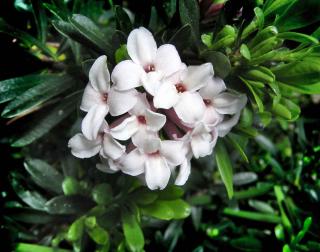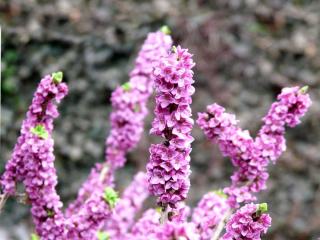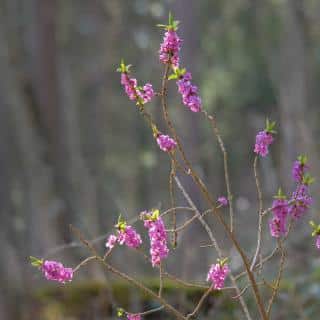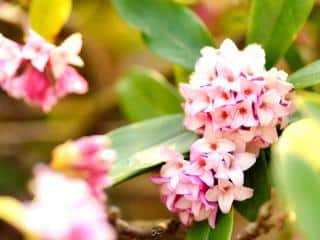

In winter, at a time where flowers are dire, Daphne blooms enchant the garden.
Key Daphne facts
Name – Daphne
Family – Thymelaeaceae
Type – shrub
Height – 20-60″ (50 – 150 cm)
Exposure – full sun
Soil – draining well
Blooming – winter – Foliage – deciduous or evergreen
A fragrance of jasmine and spices, an abundant blooming from January to the end of March… Daphne is the plant kingdom’s gift to us with its most extraordinary fragrance.
Exotic, powerful, very flowery with hints of carnation, jasmine and hyacinth with a dash of clove spice, it can tickle your nose from yards away!
Apart from its fragrance, this shrub also drapes itself in a ravishing blooming, an abundance which is quite rare at this time of the year.
Its gradient-like flowers with hues of white, pink and purple unfurl in uncountable numbers for many long weeks. Following the flower, a profusion of little brightly colored berries appears.

The best place for this shrub is clearly the front door of the house. Plant three specimens around your main door, or any other passageway so that you won’t miss its enchanting scents.
Pair it with heath, early-blooming bulbs (winter aconite, narcissus and botanical crocus).
When planted in conjunction with sparse ground cover plants, they’ll be protected against drought.

Daphne fears standing moisture, heavy, compact soil that suffocates roots, excessively strong heat and violent sun. It loves having its roots kept cool in summer. Mulching will help do this, as will the fact of watering often whenever the temperature hits 75°F (25°C) or more.

Apart from the occasional removal of dead and broken sprigs, it doesn’t require any pruning.
In fact, pruning too severely can even lead to the entire branch dying off, perhaps even the whole plant.
Best is to check how large a desired variety is expected to grow. That way, you can select a size that fits your space.
If you appreciate its fragrance, go for D. bholua which has a remarkable scent in winter.

The most common variety is certainly D. mezereum. It’s also known as mezereon and spurge olive, which it resembles. Leaves drop in winter, but it is covered in beautiful pink blooms in January-February.
All types of daphne are poisonous. Only grow them in gardens where young children are always under supervision.
If sap touches skin, it may trigger allergic reactions. Wear gloves when handling daphne.